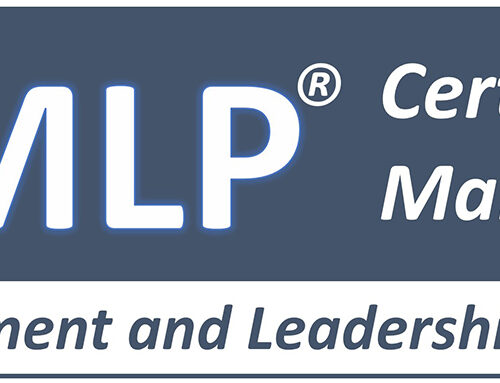This post was first published in my “Driving IT Productivity” column on CIO.com and has been updated from its original form.
A Productivity Cocktail ™ is the unique combination of productivity tools, techniques and best practices that maximizes your organization’s efficiency and provides the largest amount of time, money and resources for use in other business initiatives.
When it comes to organizational productivity, there is no silver bullet or one-size-fits-all solution. As a result, the pursuit of enhanced efficiency is truly a combination of art, science, trial and error, and ongoing continuous innovative improvement. That said, there are definable operational categories that can help you identify the productivity activities that will help drive your team’s performance.
These categories, described in detail in my upcoming book “Productivity Driven Success”, can help you identify areas within your company where potential operational and personal efficiencies can be found. These categories are;
Creative Delegation:
Smart delegation is the concept that assigning tasks to your staff should be much more than simply handing out work assignments. If done with thoughtfulness and holistic purpose, it can not only get the work done, but it can also increase team morale, reduce employee attrition, provide training, increase productivity, build your management bench strength and free up some of your day to perform other meaningful tasks. These lofty goals can be achieved by assigning tasks strategically from a talent management perspective in addition to standard operational necessity.
Ongoing Process Improvement:
Enhancing business and technical processes is an important and long-lasting way to increase organizational productivity. The reason is, by definition, processes are tasks that are performed on an ongoing basis. Thus, enhance the process once and benefit from its enhanced efficiency again and again. Process enhancement should be viewed as not only short term cost savings for today, but also a long term investment in your company’s future profitability.
Communication Efficiency:
As time moves forward, it seems there are more and more ways for employees to communicate with each other, their customers and their vendors. These communication mediums are divided into two types, synchronous and asynchronous. Synchronous refers to communicating live with one or more people. Examples include face-to-face, phone, texting and live webinars. Asynchronous refers to communicating with others at different times using tools such as email, discussion boards, and social media.
The issue is that when any one medium is overused or not used correctly, it can become a major drag on organizational productivity and even hinder internal communication. For example, simple best practices coupled with the right organizational culture can reduce the hours of time spent writing long emails that will not be read, when a two-minute phone call could have solved the problem. This and other similar corrective actions can harvest remarkable time saving results.
Knowledge Storage and Transfer:
This is the collection and distribution of internal corporate knowledge. All too often crucial corporate knowledge is lost when contracts leave after finishing their assignment or when key employees retire. The right business processes can help retain this valuable information. On the other side of the coin, when employees join a company, move internally or get promoted, the faster they can get up to speed on their new role, the more quickly they can become fully productive. The right onboarding, training and educational process can reduce learning curve, thus, enhance productivity.
Time Management:
Organizational time management is a combination of individual productivity and organizational productivity. Individual productivity is important because, in the aggregate, it enhances your team’s overall work throughout. Organizational productivity goes beyond the individual and analyzes how departmental prioritization, complementary task assignment, and smart delegation can be used to orchestrate organizational activities in a way that maximizes overall efficiency and throughput.
Asset Reuse:
At a high level, asset reuse is the repurposing of intellectual property, software, physical devices, business processes and other similar company assets. This is an extremely powerful and valuable productivity enhancer. I say this because it helps you to get more value out of the items you already own. In effect, you’re getting additional value for free. A favorite IT example of mine of this activity is that the same source code library tool used by software developers to store and manage their source code can be used by the Help Desk to keep track of the operating system builds placed on newly purchased PCs, laptops, tablets and phones.
Intelligent Meeting Management:
Meetings are like dentist appointments. You know they’re good for you, but just as you walk into the room you can think of a million things you would rather be doing. Meetings are expensive in regard to the time they take and, thus, the opportunity cost they incur. In addition to the standard cast of meeting productivity characters, such as strong agendas, timekeepers and finite invite lists, you should also calculate a meeting’s cost, based on the compensation of the employees attending. After the meeting, mentally perform an ROI analysis to see if the meeting’s outcome was worth the money. These simple mental gymnastics can help you and your staff maximize meeting effectiveness and simultaneously minimize their cost.
Leveraging the Zone:
We have all felt it. Being in the zone is when you are mentally clear, highly focused on a specific task, physically able to perform the task, and motivated to perform it. It’s a wonderful thing. The task itself could be writing a great presentation for senior management, playing a great game of basketball or cleaning your garage.
Zone-based prioritization is the managerial process of assigning tasks and scheduling group activities (such as staff meetings) based on trying to maximize individual and team productivity by anticipating and facilitating the ultra-productivity that can be achieved when in the zone.
In closing, given your specific industry and organizational size, there are very possibly other broad categories of potential productivity enhancement. Use this blog as a beginning, rather than an end-all, in driving your organization’s future productivity.





